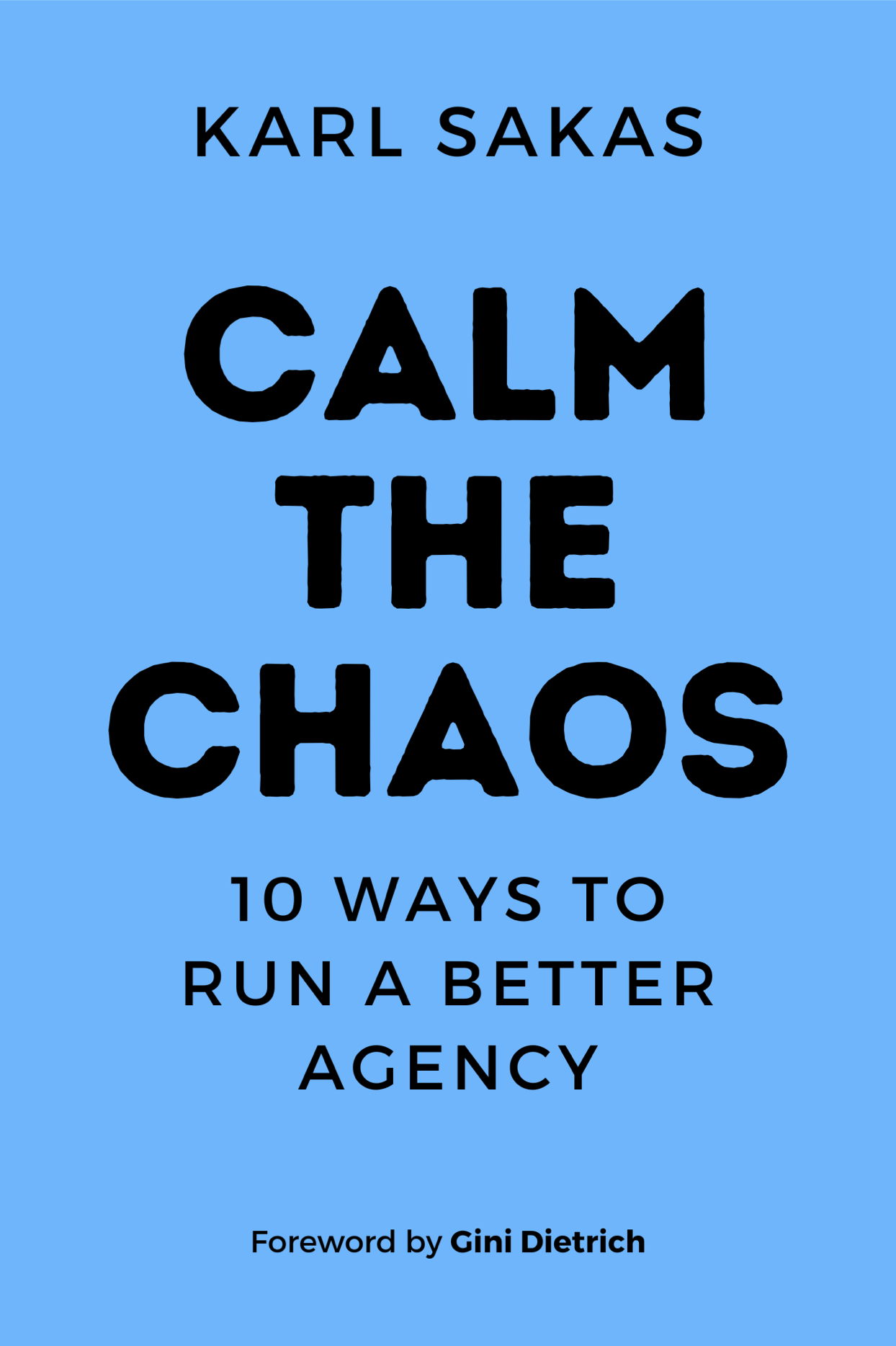As an agency leader, you face an inevitable reality: 100% of your employees will eventually leave you, whether voluntarily or involuntarily. Agency benchmark: your annual employee turnover should be under 20%.
The good news about preparing for [voluntary] employee turnover? Once you accept this reality, you can prepare for the inevitable. You’ll be less likely to make reactive mistakes, and you’ll better secure your agency’s future.
Skeptical that every employee will eventually leave? Over a long enough time horizon, it’s true—every non-owner employee will resign, be fired, be laid-off, or (I hope not) die while working for you.
What if someone has already just resigned, and you’re wondering what to do immediately? I’ll share advice in a future article about how to handle “reactive” mode. Sign up to hear when it goes live—and I’m glad to do a one-time consulting call to help you in the meantime.
Now, let’s look at my four steps to follow—including knowing the three types of employee resignations.
Employee Turnover Preparation: A Proactive 4-Step Process for Agencies
When it comes to being proactive, what’s the key? I’ve identified four steps:
- Understand the three types of employee resignations. My categories are: Glad, Sad, and Mad.
- Evaluate your current employees. Match each person to one of the three categories.
- Take action based on your evaluation. This includes working to retain top performers… and counseling-out any poor-fit employees.
- Update your employee evaluations on a regular basis. I recommend an annual update, but fast-growing agencies might do a semi-annual or quarterly review. And review on a continuous basis, when it comes to relationships with any co-owners.
Now, let’s take a closer look at each step so you can be proactive about employee turnover.
1) Understand the Three Types of Employee Resignations
When an employee quits, it’s normal to feel panicky. After all, you were relying on them… and now they’re leaving your agency.
But not every employee resignation is equal; let’s explore, based on how you might react to each person’s departure.
Glad, Sad, or Mad: Your Reaction to Employee Resignations
Any emotion is valid—I’m not mandating how you “should” feel. But we can use three basic emotions as a shorthand to organize things. Here are my categories for the three types of employee resignations:
- Glad: You’re happy the employee resigned. They were borderline—or even problematic—but you were reluctant to fire them. They might have been on a performance improvement plan (PIP). Their resignation saved you paying severance… but you probably should have fired them, since they weren’t helping the agency. Now, you can replace them with New Rope.
- Sad: You have neutral or mixed feelings about the resignation. You’ll be sad to see them go, but it won’t be the end of the world. Perhaps the employee wasn’t Wet Twine, but they weren’t critical New Rope, either. Or maybe the role had shifted, and you no longer needed their expertise. Or they weren’t thrilled about doing the work you needed them to do. Now you have a chance to start from scratch, based on what you need today.
- Mad: You’re unhappy the employee resigned. They were a key contributor, making your agency better—and now you’re losing their help. Their leaving is going to make life harder for you, and they’re going to be hard to replace. If you’re an Executive Coaching client, this merits an emergency support call. (Note: Do some processing before you speak with a “Mad” resignation employee; it’s inappropriate to accuse them of being disloyal or to otherwise take it out on them.)
Note: Although the labels overlap, this is not the “Mad Sad Glad” exercise from doing Agile retrospectives (debriefs).
Resignations That Are Worse than “Mad”?
Is there a category that’s worse than “Mad,” in terms of negative impact on your agency? Yes—if your business partner(s) left, it would likely be enormously disruptive—or even business-ending.
But ownership is significantly more involved than being an employee. I hope you’re monitoring the quality of your partner relationships on a continuous basis, so you aren’t surprised. And I hope you have a partnership agreement that spells out what happens if someone wants to leave, so you’re not working from scratch.
Now, back to your “regular” (non-owner) employees…
2) Evaluate Your Current Employees
Consider each one of your current employees: Would you be Glad, Sad, or Mad if they resigned?
Your specific reaction to each resignation would likely be more nuanced than a single basic emotion, of course. But using three categories now gives you a shortcut to make key decisions without becoming paralyzed later.
Not sure about a specific employee? Re-read the three category descriptions above. If you’re still not sure about someone, get insights from their direct manager. If someone’s resignation wouldn’t make you “Mad” or “Glad,” I suggest defaulting to “Sad” for them.
Want a shortcut to organize this? Get my Agency Profitability Toolkit™—one of the 50+ templates is a detailed “Employee Census” spreadsheet, including 15+ key points on each person.
3) Take Action Based on Your Evaluation
Once you’ve completed the evaluation, it’s time to take action.
If you’d be “Mad” if they resigned (because they’re a great employee)
If they’re a great employee, you want them to stay as long as possible. Ask yourself:
- Are you doing your best to retain them, including paying them appropriately?
- Is the employee feeling both Warmth & Competence from you?
- Do they see a clear career path for themselves at your agency?
If the answer to any of those is “no,” you’re indirectly contributing to the employee leaving sooner… but you can fix that. Fix that.
If you’d be “Sad” if they resigned (because they’re an OK employee)
If someone’s merely “OK” as an employee, you don’t want them to leave. You should be a good boss, and you should look for ways to make their work life easier. But you might not fight hard [now] to keep them. For instance, you probably wouldn’t volunteer a pre-emptive 20% raise.
If you’d be “Glad” if they resigned (because they’re a terrible employee)
If someone’s a terrible employee—usually because they’re a poor culture fit, but sometimes because they’re incompetent—ask yourself why you’re tolerating their poor performance.
For most of my clients, their agency is their #1 or #2 financial asset. What else in their portfolio will pump out six-figure annual compensation and the potential of a 7+ figure payday if they opt to sell? The agency owner and their family are relying on the agency to succeed.
When you keep a poor-fit employee, you’re effectively stealing from your future. Fire them, or counsel them out. Or at least give them an opportunity to turn things around—in a limited time, not forever—and then take action.
4) Update Your Employee Evaluations on a Regular Basis
Once you do the initial employee evaluation (“coding” people into the three categories), you’ll want to do ongoing updates. Why?
- Current employees may change—moving up or down.
- As new people join, you’ll want to evaluate them, too—likely after they’ve been on board for a few months.
What’s the right frequency? I recommend an annual update, but if you’re growing fast, you might want to do a semi-annual or quarterly review. And definitely update new hires’ status—ideally as they wrap up their 90-day probationary period, in case it helps you realize someone isn’t a good match after all.
Are you prepared for Employee Turnover at your agency?
Staff turnover is inevitable. As long as your employee turnover isn’t more than 20% annually, you’re on track. (If turnover is higher than that, you probably need my help. But at a minimum, sign up for my free email program: “Become a Better Manager in 30 Days.”)
Take a deep breath, and follow the four steps above. You’ll likely get through any resignation, no matter how painful it is at the time.
Many agencies report that they’re stronger after the change. For example, an agency owner shared during Executive Coaching:
“We’ve lost one employee, which is a blow, and will be losing another in a couple of months… but that one is probably a good move for us and them.” She elaborated: “Overall I think we have a great opportunity to build an even better team as a result of the changes.”
Not sure what to do after someone just resigned? I’ll share advice in a future article about “reactive” mode. Sign up to hear when it goes live—and I’m glad to do a one-time consulting call to help you in the meantime.
Question: What are you doing to prepare for employee turnover at your agency?


